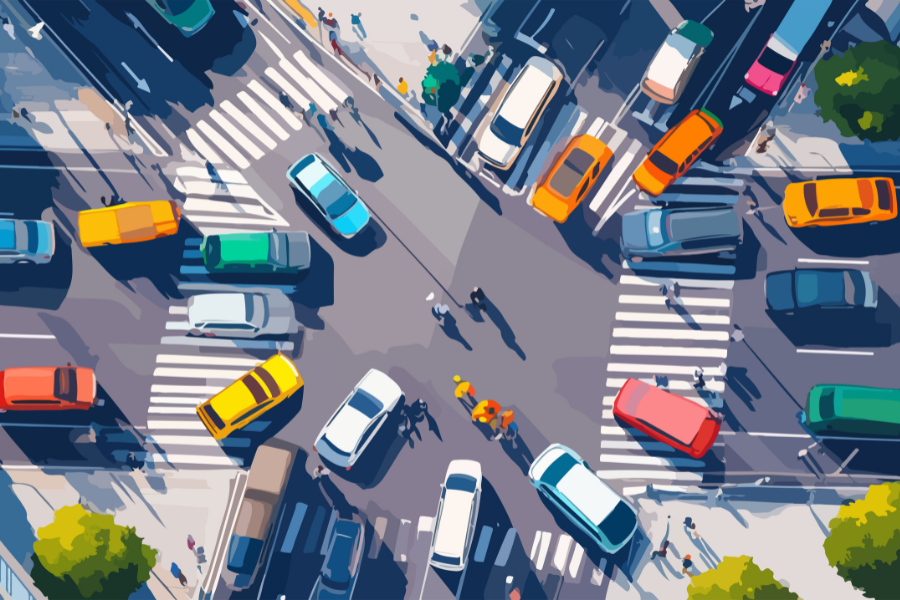 On-Page SEO Optimization – Fix Hidden Errors Killing Rankings!
On-Page SEO Optimization – Fix Hidden Errors Killing Rankings!
When to Give Way: Essential Scenarios on the Road
Written by onroad » Updated on: June 17th, 2025

When we talk about driving skills, the most discussed topics are driving skills like parallel parking or safe driving practices like maintaining a safe distance. But there’s more to driving than this. Learning the rules and laws related to driving is equally important and needs to be discussed more. For example, consider a scenario where you’re turning at an intersection and other drivers or pedestrians are crossing the road. In this case, who should stop and give way for the other to pass first? Knowing when to give way to other cars is something that all drivers should be taught. Give-way rules define proper road behavior so vehicles can move predictably even when crossing each other. Just like teaching safe driving in courses like the Safer Drivers Course, driving schools should also focus on teaching basic traffic rules like giving way to their students. Driving lessons should be tailored to include the scenarios when drivers should give way to others and highlight any differences in the rules depending on the state. Here are the main scenarios where drivers should know the rules to give way:
Intersections Without Traffic Lights:
When you’re at an uncontrolled intersection, the crossroads won’t have any traffic signs or lights. At such intersections, Australian road rules dictate that you should give way to all vehicles on your right.
Stop and Give Way Signs:
Roads and intersections often have road signs like ‘Stop’ and ‘Give Way’ that guide the drivers on what to do on the road. When you see the ‘Stop’ sign, Stop completely and give way to all other cars and pedestrians crossing the road. And when you encounter a ‘Give Way’ sign, slow down your car and be prepared to stop completely if needed.
Roundabouts:
Driving on roundabouts is a tricky business. Add to it the rules of who should go first, and it’s quite easy to get confused and make mistakes. So, if you’re one of those who gets confused in such situations, just remember to give way to all vehicles that are already on the roundabout. Another thing to remember is to signal your intentions whenever you’re entering or exiting a roundabout.
Pedestrian Crossings:
Drivers often get frustrated when pedestrians make them stop and wait while they cross. But the Australian road rules are clear. Drivers must give way to pedestrians on the crossings. If you’re approaching a pedestrian crossing, slow down to let the waiting pedestrians cross in peace. Drivers should also be ready to stop completely if needed to let the waiting pedestrians cross first.
Merging Lanes:
Sometimes you’ll face a situation where the road lanes are merging from two lines into one. Often in such cases, the lane lines are marked on the road and one line is ending or merging into another. In such cases, you should always give way to the vehicles ahead. But what if the lanes are not marked? In such cases, the car in front of you or on the left has priority. So, you should give way to the cars in front or on the left of your car.
Turning at Intersections:
When turning at intersections, knowing the rules to give way can save lives and prevent you from committing road offenses. When turning right at an intersection, you should give way to oncoming traffic and wait patiently for them to pass first. If you’re turning into a road and you see pedestrians waiting or trying to cross, you should give way to them and slow down or stop to let them pass.
Slip Lanes:
When using a slip lane, you should ensure that the pedestrians or cyclists waiting at the crossing go first.
Entering and Leaving a Road:
When entering a road, you must check for oncoming traffic and any pedestrians trying to cross. If you notice any vehicles or pedestrians, you should always give way and let them pass. Also, when leaving a road, you should ensure to give way to all pedestrians and other cars before leaving.
U-Turns:
The rules for making a U-turn in Australia state that you must give way to all vehicles and pedestrians first. Even if the cars or pedestrians are turning from the opposite direction, you must still wait and let them pass before turning.
Emergency Vehicles:
Giving way to emergency vehicles is everyone’s civic and moral duty. When you see any vehicle approaching with flashing lights or sirens, you should move to the left and stop if required to let them pass.
Give-way rules are designed to create a common code of conduct for road safety. It prevents drivers from getting confused about when to stop and guides pedestrians on when to cross roads and what to expect from drivers. Driving schoollike Onroad Driving Education should take the initiative to teach new drivers the right protocols for driving on the road.
Note: IndiBlogHub features both user-submitted and editorial content. We do not verify third-party contributions. Read our Disclaimer and Privacy Policyfor details.
Copyright © 2019-2025 IndiBlogHub.com. All rights reserved. Hosted on DigitalOcean for fast, reliable performance.














